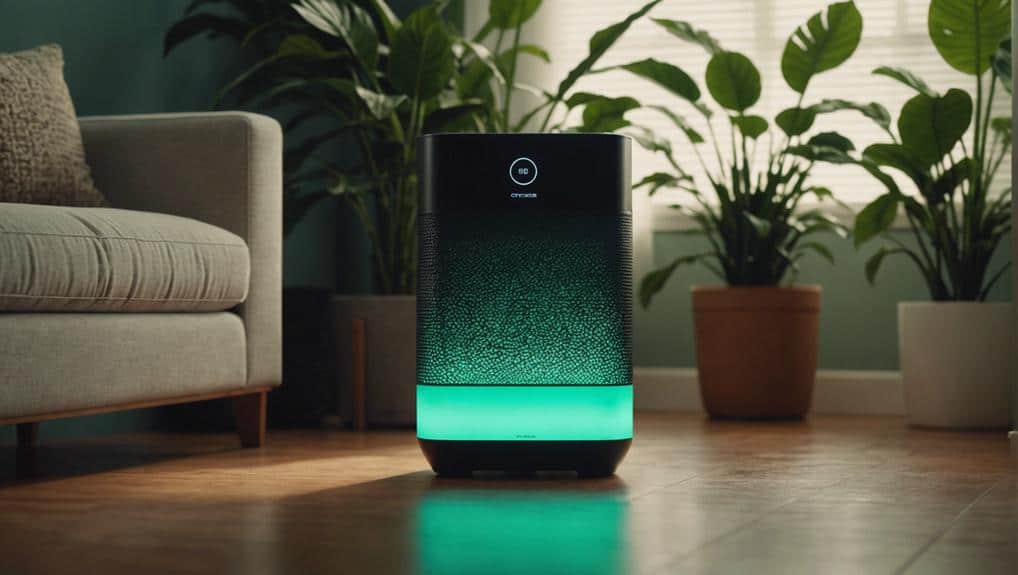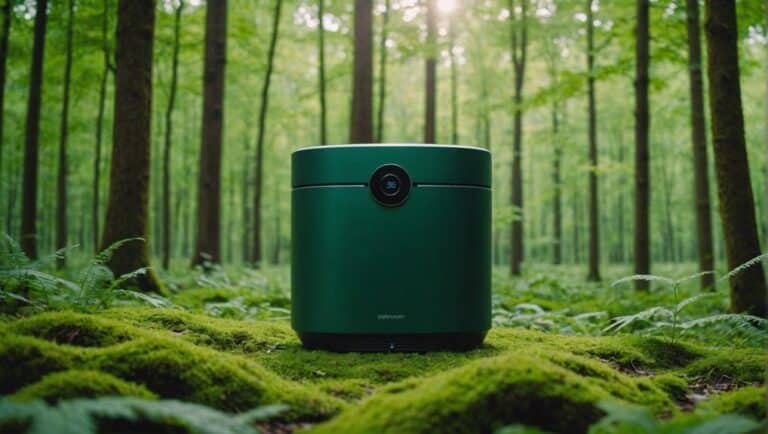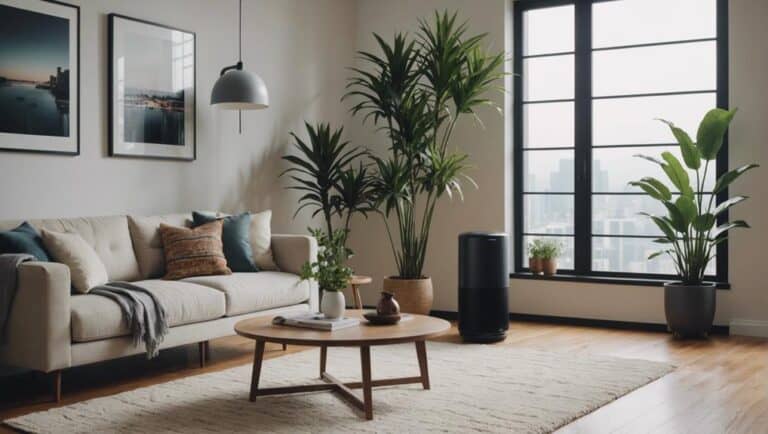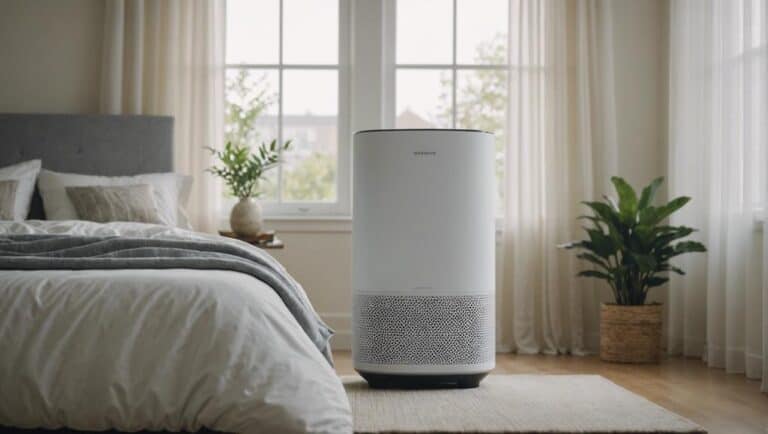Air Purifier Humidifier: The Ultimate Guide for Clean Indoor Air
As we navigate the complexities of maintaining a healthy indoor environment, the integration of air purifier humidifiers has become a focal point for many seeking cleaner air. Combining the advantages of air purification and humidity regulation, these devices offer a holistic solution.
But how do they work in harmony to tackle indoor air pollutants effectively? Let’s explore the intricate mechanisms and considerations that make air purifier humidifiers a formidable duo in the quest for pristine indoor air quality.
Benefits of Air Purifiers
Using an air purifier in our home can greatly enhance indoor air quality by removing up to 99.97% of airborne particles like dust, pollen, and pet dander. HEPA filters within these purifiers are highly effective, capturing particles as small as 0.3 microns, targeting common allergens and pollutants.
The inclusion of activated carbon filters further elevates the purifying process by absorbing odors and volatile organic compounds (VOCs), ensuring the air remains fresh and clean.
Additionally, air purifiers equipped with UV germicidal lights provide an extra layer of defense by eliminating bacteria and viruses, safeguarding against harmful pathogens that can compromise our well-being.
Types of Air Purifiers
After understanding the benefits of air purifiers in enhancing indoor air quality, exploring the various types available can further illuminate the specific functionalities and advantages these devices offer. When it comes to selecting an air purifier, different types cater to specific needs. Here are the key types of air purifiers and their functions:
| Type | Function | Advantages |
|---|---|---|
| HEPA Air | Captures up to 99.97% of airborne particles | Effective against dust, pollen, and pet dander |
| Activated Carbon Filters | Absorbs odors and VOCs from the air | Great for eliminating unwanted smells and chemicals |
| UV Germicidal Lights | Kills bacteria and viruses | Enhances disinfection and improves air quality |
Each type of air purifier offers distinct benefits, from particle removal with HEPA filters to odor control with activated carbon filters and disinfection using UV germicidal lights. Understanding these distinctions can help you choose the most suitable air purifier for your indoor environment.
Pros and Cons of Air Purifiers
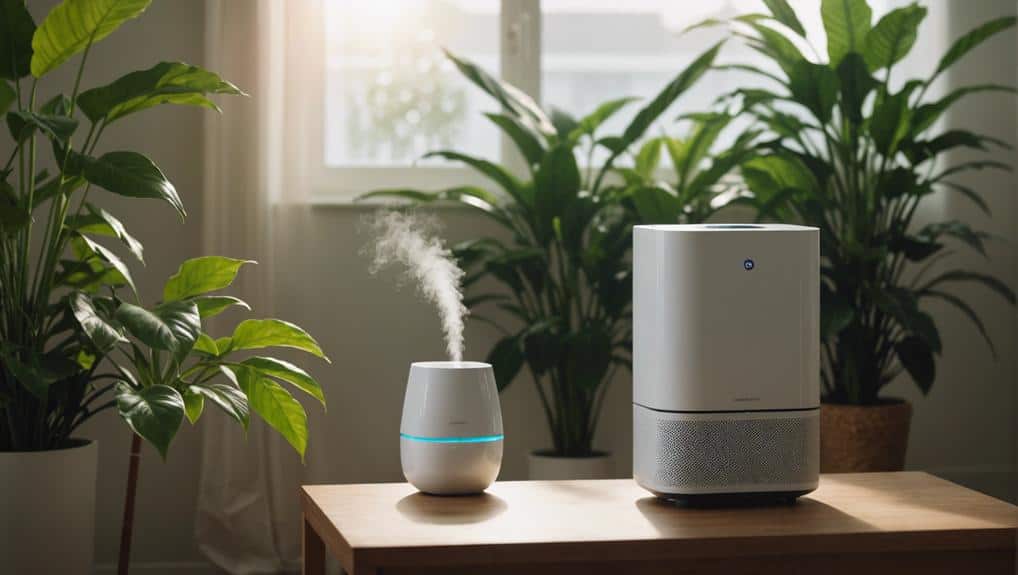
Air purifiers offer a range of benefits and drawbacks that should be carefully considered when deciding whether to incorporate them into your indoor environment.
These devices can effectively remove up to 99.97% of airborne particles, such as dust, pollen, pet dander, and mold spores, improving indoor air quality. Air purifiers can help alleviate allergy symptoms and respiratory issues, creating a cleaner and healthier living space.
Some models come with activated carbon filters that absorb odors and volatile organic compounds, enhancing the freshness of the air. Additionally, UV germicidal lights in air purifiers contribute to a more hygienic environment by killing bacteria and viruses.
However, it’s essential to note that air purifiers may produce ozone as a byproduct, which can be harmful in high concentrations. Before investing in an air purifier, weigh the benefits of improved indoor air quality against the potential drawbacks to make an informed decision for your home.
Benefits of Humidifiers
Humidifiers offer various benefits, such as improving air quality and promoting healthier skin.
By adding moisture to the air, humidifiers can help alleviate dry skin and prevent respiratory issues.
Maintaining ideal humidity levels with a humidifier can create a more comfortable indoor environment for overall well-being.
Improved Air Quality
By adding moisture to indoor air, humidifiers can greatly enhance the quality of the air we breathe, benefiting our overall health and comfort. Proper humidity levels are essential for clean air, and air purifiers can help improve indoor air quality by maintaining ideal moisture levels. Here is a table summarizing the benefits of using a humidifier:
| Benefits of Humidifiers |
|---|
| Alleviates allergies, asthma, and sinus congestion |
| Prevents the spread of airborne viruses and bacteria |
| Protects wooden furniture and flooring from damage |
With these advantages, controlling the humidity in your home with a humidifier can lead to cleaner air, healthier living, and a more comfortable environment.
Healthier Skin
Maintaining ideal moisture levels in the air with a humidifier can greatly enhance the health and appearance of our skin. Humidifiers play a vital role in improving indoor air quality, preventing dry skin, and creating a comfortable living environment. By reducing dryness and irritation, humidifiers help combat issues like flakiness and itching, promoting healthier skin.
Dry air can worsen conditions such as eczema and psoriasis, but the added moisture from humidifiers can alleviate these symptoms. Consistent use of humidifiers not only enhances skin hydration but also improves the overall texture and look of our skin. Especially during dry seasons or in arid climates, humidifiers contribute to a more comfortable and healthier environment for our skin.
Types of Humidifiers
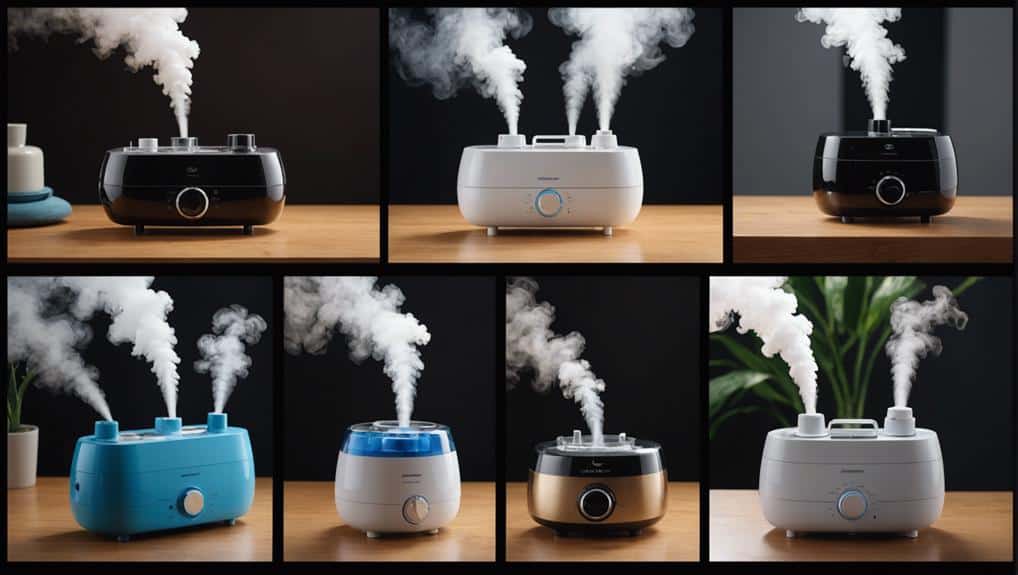
When considering ways to increase indoor humidity levels, various types of humidifiers offer distinct methods to achieve this goal. Ultrasonic humidifiers, for instance, utilize high-frequency vibrations to generate a fine mist, while evaporative humidifiers pass dry air through a wet wick filter to release moisture. Both options are effective in adding humidity to the air.
Ultrasonic humidifiers are popular for their quiet operation and ability to disperse cool mist, making them ideal for bedrooms or offices. On the other hand, evaporative humidifiers are energy-efficient and work well in larger areas. Please be aware that steam humidifiers produce warm mist by heating water and cooling the steam before release, while impeller humidifiers create a cool mist using a rotating disk.
Selecting the right type of humidifier depends on factors like room size, desired humidity levels, and personal preferences for mist temperature. By understanding the differences between these types of humidifiers, you can choose the one that best suits your needs.
Pros and Cons of Humidifiers
Let’s weigh the benefits and drawbacks of using humidifiers in our homes.
They can help combat dry skin and alleviate nasal congestion, but they require proper maintenance to prevent mold growth and maintain good indoor air quality.
Understanding the pros and cons of humidifiers is crucial for creating a healthy indoor environment.
Humidifier Benefits
Humidifiers offer a range of benefits and drawbacks that directly impact indoor environments and personal health. Maintaining proper humidity levels with a humidifier can help reduce the presence of airborne particles, mold spores, and other indoor air pollutants. This can be particularly beneficial for individuals with respiratory issues like asthma and allergies, as the increased moisture can alleviate symptoms and improve breathing.
Additionally, humidifiers can improve skin hydration, preventing dryness and irritation. They also aid in preserving wooden furniture and musical instruments by preventing cracking. Furthermore, humidifiers can reduce static electricity in the air, creating a more comfortable indoor environment.
However, it’s important to avoid over-humidification as it can promote mold growth and worsen indoor air quality problems.
Drawbacks of Humidifiers
Moving on from the advantages of humidifiers, it’s essential to contemplate the drawbacks linked to using these devices in indoor environments.
While humidifiers can alleviate dry air symptoms, they require regular cleaning to prevent mold and bacteria growth, which can compromise indoor air quality. Over-humidification is a significant concern, as it can lead to musty odors, mold development, and worsened respiratory issues.
Additionally, steam humidifiers pose a risk of burns, especially around children or pets. Balancing the benefits of improving indoor air quality with the drawbacks of potential over-humidification and maintenance needs is essential for ensuring a healthy and comfortable environment.
Understanding these factors empowers us to make informed decisions regarding the use of humidifiers in our homes.
Air Purifiers Vs. Humidifiers
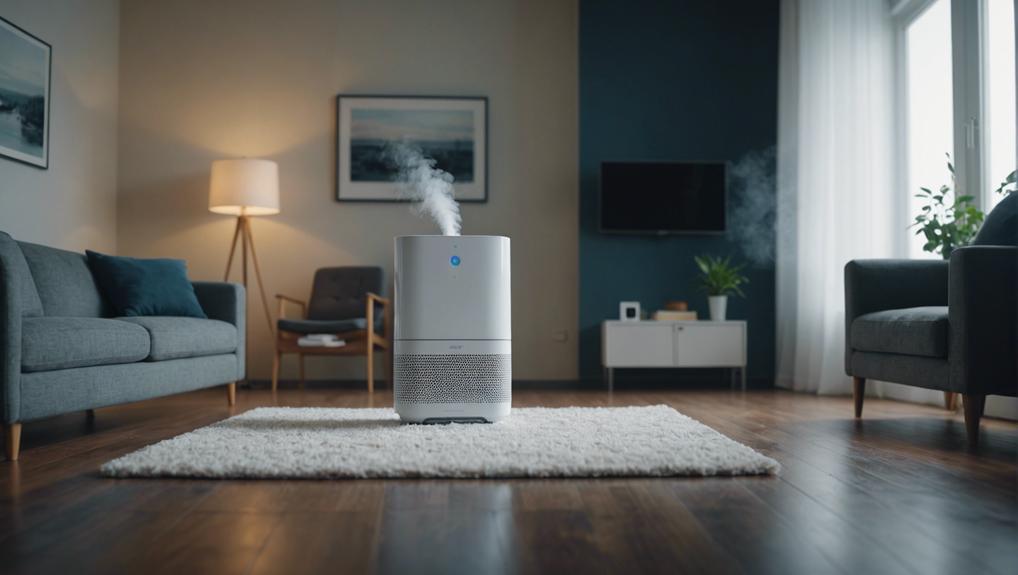
Comparing air purifiers to humidifiers reveals the distinct functions they serve in improving indoor air quality and comfort levels. Air purifiers are designed to target pollutants like dust, pollen, and pet dander, using HEPA filters to capture up to 99.97% of particles. This greatly enhances air quality, making them ideal for individuals with allergies or respiratory issues.
On the other hand, humidifiers focus on adding moisture to dry indoor air, benefiting skin, nasal passages, and overall comfort levels. They come in various types such as ultrasonic, evaporative, and steam, catering to different moisture needs in the environment.
When deciding between air purifiers and humidifiers, it’s essential to take into account specific air quality requirements, such as combating allergens with air purifiers or alleviating dry conditions with humidifiers. Understanding the distinct roles of air purifiers and humidifiers empowers individuals to make informed choices for creating a healthier indoor environment.
Maintenance Tips for Air Purifiers
To guarantee peak performance of your air purifier, make it a habit to regularly replace the filters according to the manufacturer’s instructions. By following a consistent maintenance schedule, you can prevent clogs and ensure top air purifier efficiency.
Additionally, it’s important to vacuum or gently clean permanent filters monthly to remove accumulated dust and particles that can hinder the air purifier’s effectiveness. Keeping the air purifier unit clean and free of dust is vital in preventing the recirculation of pollutants back into the air.
Monitoring the indicator lights or filter status will help you stay informed about when it’s time for filter replacements or cleaning. By staying proactive and attentive to your air purifier’s maintenance needs, you can enjoy cleaner and healthier indoor air.
Maintenance Tips for Humidifiers

Regular cleaning of humidifiers is crucial to prevent mold growth and maintain peak performance. To guarantee your humidifier operates efficiently, follow these maintenance tips:
| Maintenance Tips for Humidifiers | Frequency |
|---|---|
| Rinse and towel-dry the tank | Daily |
| Deep clean with vinegar solution | Weekly |
| Replace filters or wicks | As recommended by manufacturer |
Enhancing Indoor Air Quality
We recognize the importance of air quality and how it impacts our health and well-being.
By employing effective purification methods like HEPA filters and UV germicidal lights, we can guarantee cleaner indoor air.
The health benefits of cleaner air are evident, from reducing allergies to promoting overall respiratory wellness.
Air Quality Importance
Improving indoor air quality is essential for maintaining a healthy living space and preventing potential health issues. Poor indoor air quality, caused by pollutants like dust, pollen, and pet dander, can lead to allergies, respiratory problems, and discomfort.
Monitoring indoor air quality levels is vital for creating a safe environment. Effective air purification methods, such as proper ventilation and air filtration, can remove airborne contaminants and enhance overall air quality. Regular maintenance of HVAC systems plays a significant role in eliminating indoor pollutants.
Effective Purification Methods
Enhancing indoor air quality involves implementing effective purification methods to remove airborne contaminants and promote a healthier living environment. True HEPA filters are essential in capturing 99.97% of particles like dust, pollen, and pet dander, greatly improving air quality.
Carbon filters play an important role in absorbing odors, smoke, and volatile organic compounds (VOCs), ensuring cleaner air in your home.
UV germicidal lights aid in killing bacteria and viruses, reducing harmful pathogens in the indoor air.
Additionally, Ultrasonic humidifiers emit a fine mist to add moisture, enhancing comfort and health.
These purification methods work together to create a cleaner, healthier indoor environment, giving you control over the air quality in your living space.
Health Benefits Clarity
Indoor air quality greatly impacts our well-being and comfort, especially when considering the health benefits associated with clarity in enhancing the environment.
Improved air quality reduces airborne contaminants, addressing respiratory problems caused by allergens like dust and pollen. Additionally, air purifiers and humidifiers combat dry air, preventing issues such as dry skin and nasal irritation. By maintaining ideal moisture levels, these devices support better sleep quality and overall comfort.
Furthermore, clean indoor air contributes to a healthier living environment and can even prevent the spread of airborne illnesses. Investing in trusted air quality devices guarantees customer satisfaction and long-term health benefits.
Perfect Air & Water Services offer solutions that promise improved indoor air quality, enhancing your well-being.
Conclusion
To sum up, air purifier humidifiers are crucial for maintaining clean indoor air quality.
By combining air purification and humidity control, these devices effectively eliminate airborne particles, allergens, and odors while adding moisture to dry air.
Choosing the right type and following proper maintenance guidelines can greatly enhance indoor air quality and promote overall well-being.
Be sure to invest in an air purifier humidifier to guarantee a healthier living environment for you and your loved ones.
